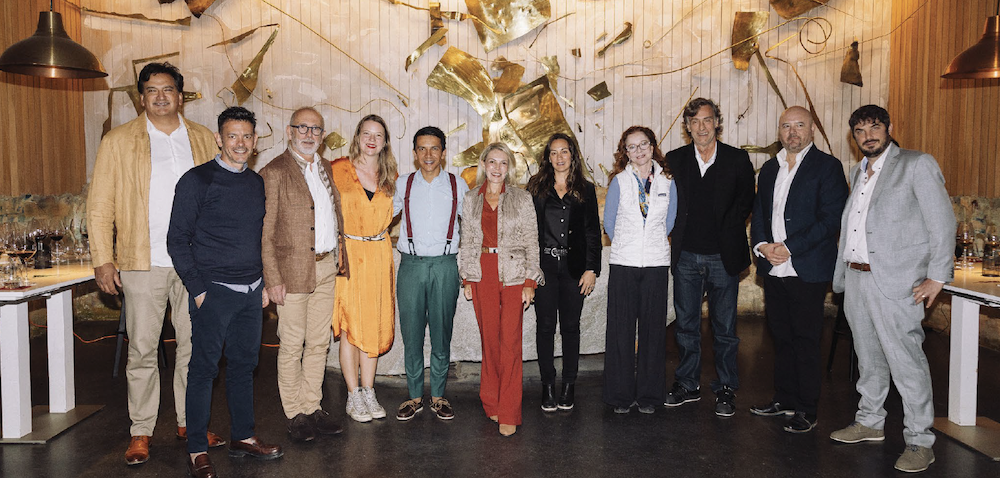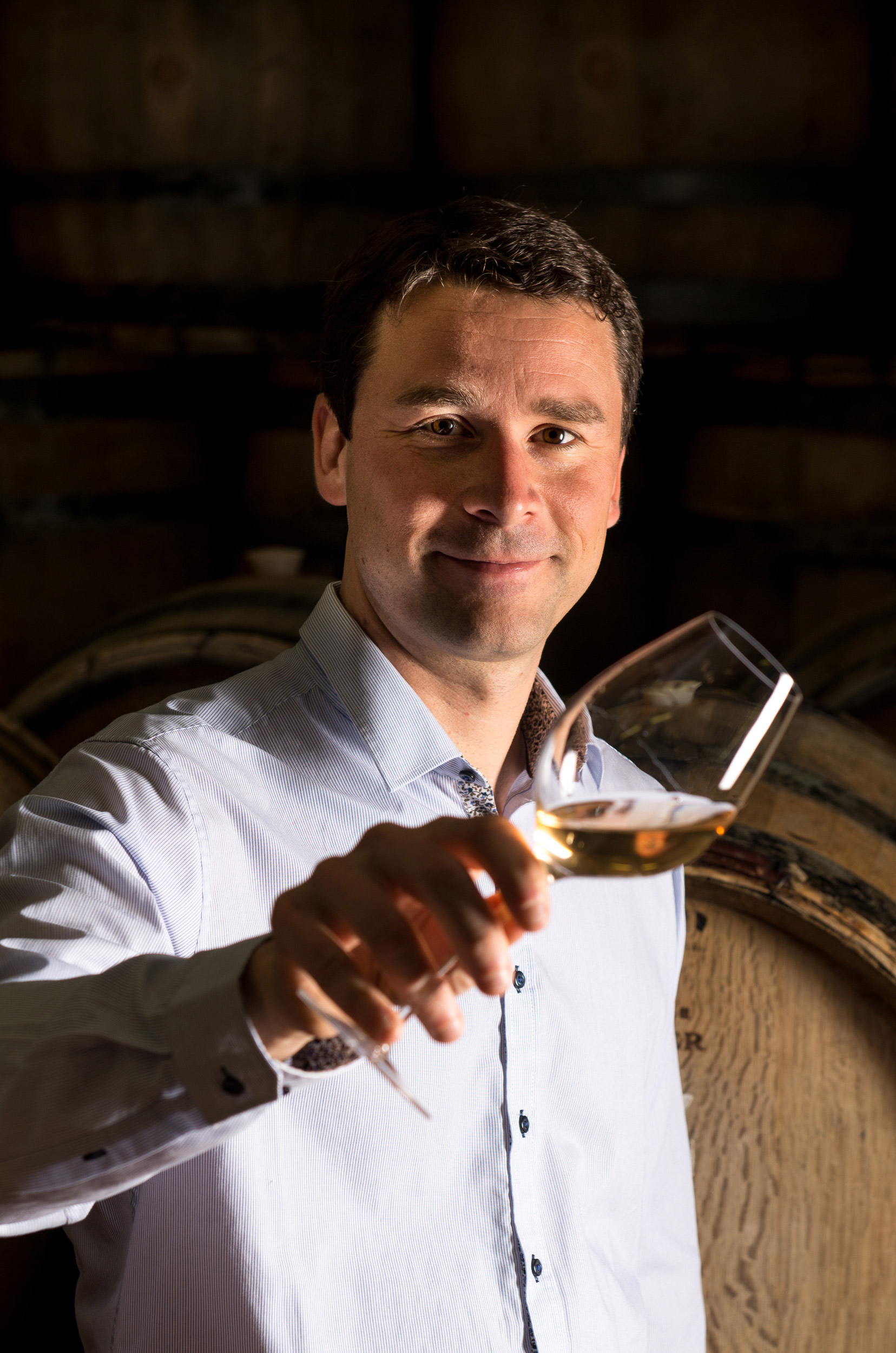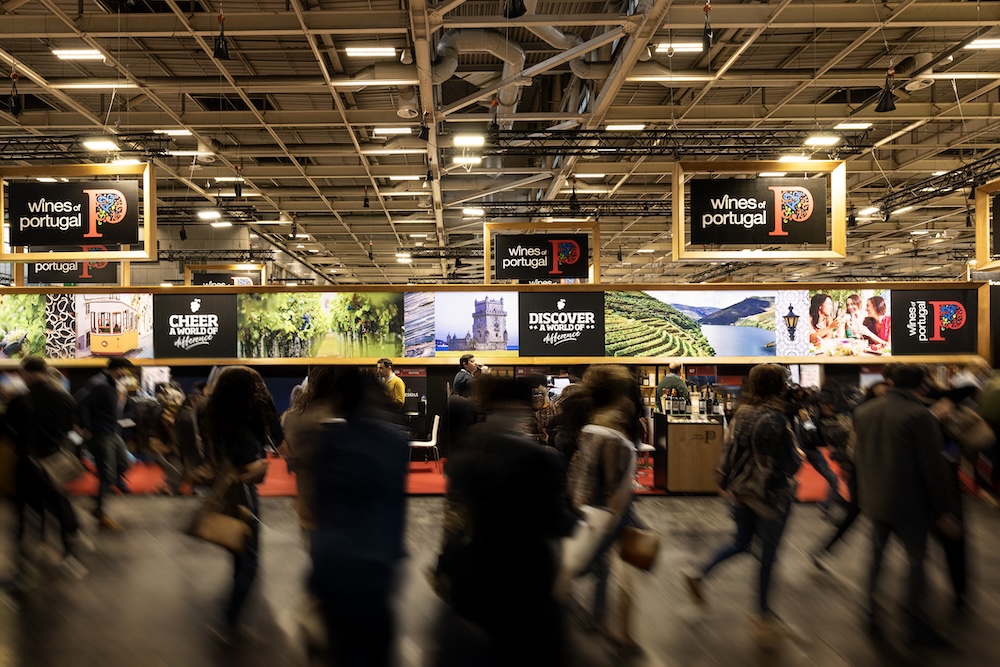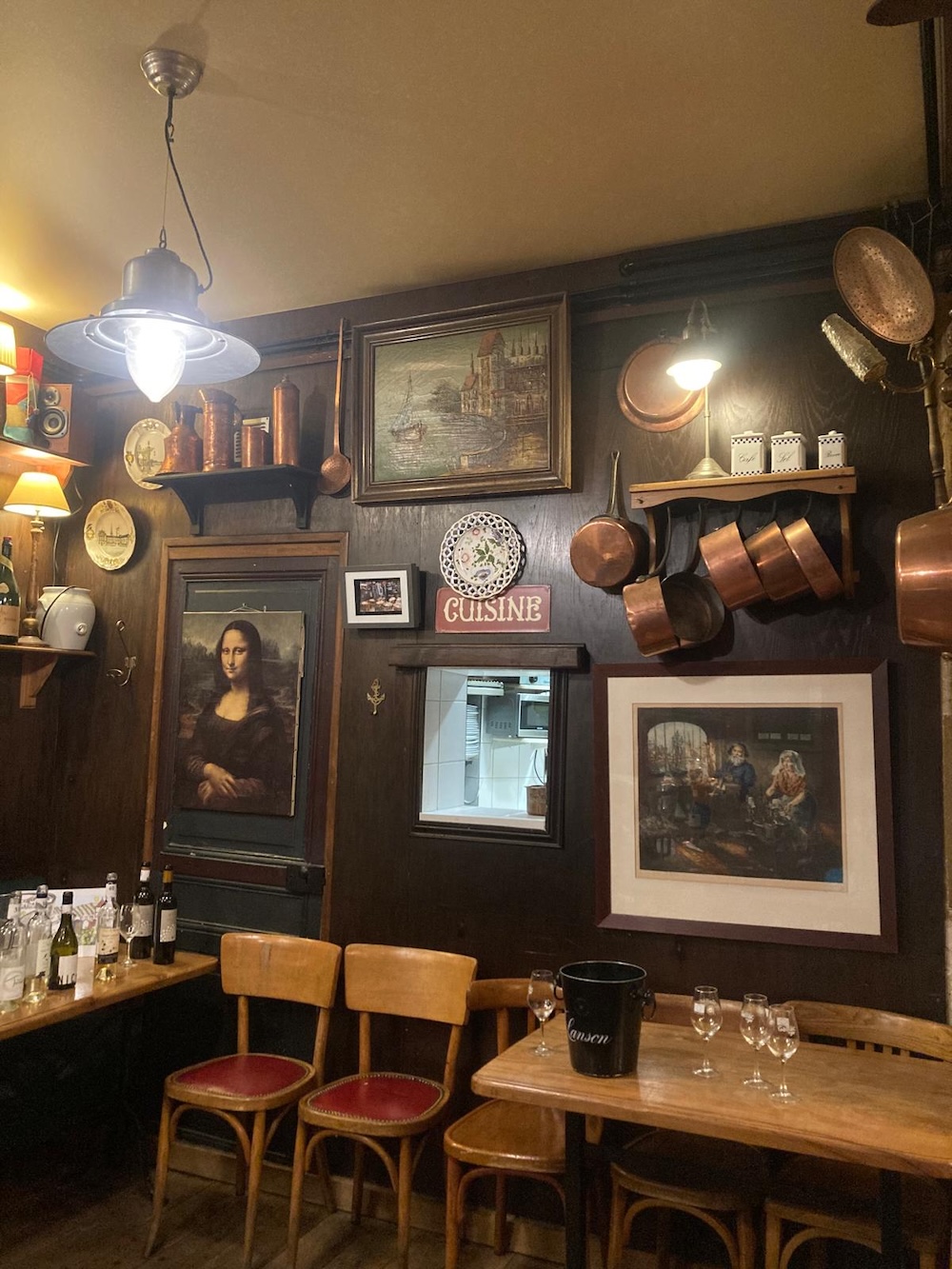
Discovery

Discovery
By Alain Echalier, Photographs: Horizon bleu, Franck Kauff, Liger-Belair, Eric Vanden, courtesy of the estates, posted on 28 January 2022
We often wrongly refer to ‘Champagne’. With a history spanning over 300 years, the wines currently come from 34,300 hectares of vines, spread over 5 French departments. It follows that, although they share common character traits, styles should differ significantly. Before we meet an exciting line-up of winegrowers, merchants and co-operative producers who will share their viewpoints with us, let’s quickly go back over some of the basic tenets of Champagne.
Due to climate change, Champagne can no longer claim to be home to the only vineyards in the North of Europe. Vines are now grown in the South of England, Belgium and Luxembourg, at even more extreme latitudes. But these wine regions are limited in size, whereas Champagne produces an average of 230 million bottles a year – at a latitude of 49.5 North! So the first characteristic to remember, and which stems from a harsh climate, is the freshness in the wines. This is a direct consequence of very moderate sunshine – Reims has 1,629 hours a year, compared with 2,069 for Bordeaux.

The second trait shared by Champagne wines comes from the geology of the sub-soils, which are mostly formed of chalk. Not only do vines thrive on chalk, which acts as a storage receptacle for water due to its permeability, it is also essential for those who drink Champagne because it imparts distinctive minerality. Obviously the sedimentary outcrops can vary, from chalk to marl and actual limestone. Admittedly, in the Côte des Blancs region near Epernay, the chalk forms outcrops, whereas it is deeper on the Montagne de Reims and in the Marne Valley the soils are more marly or siliceous. Generally speaking though, Champagne contains and displays a hallmark ‘chalk taste’.
To transform such lively juice and cope with the vagaries of the weather some years, Champagne producers use a specific method. The first fermentation turns the juice into still wine. Then time plays its part. By maturing these still wines, followed by a secondary fermentation in the bottle, the bubbles are formed but the wine also improves. Its sharp acidity makes way for appetising freshness. Also, the secondary fermentation produces more complex, idiosyncratic aromas which add extra palatability.
Blending wines from different vineyard blocks, as well as batches of reserve wines from previous vintages, also opens up a complex array of aromas. Lastly, dosage – the final addition of sugar to balance the wine – offers an opportunity for winegrowers to put the finishing touches to their work. Some use concentrated grape must, whilst others add mature wines, Cognac or honey from their own estate.
This ‘recipe’, which has been copied countless times around the world, is called the ‘traditional method’. But Champagne is constantly mindful to ensure that it alone can call the technique the ‘Champagne method’.
Bollinger, which is located in Aÿ, was founded in 1829. It owns 178 hectares of vines and buys grapes in roughly the same proportions. Deputy cellar master Denis Bunner answers our questions. Formerly with the Champagne wine marketing board, as a winemaker, his first question after he joined Bollinger was, What is the Bollinger style? How can it be defined?

Joint research work provided the answer – “fruit in all its phases”, in other words, fresh, ripe and dry. Fresh fruit aromas come from the year’s wines. To preserve them, the wines are made in stainless steel tanks. The ripe fruit aromas come from reserve and oak-fermented wines – the house uses a staggering 4,000 casks!. Finally, the dried fruit aromas and toast can be credited to the reserve wines stored in magnums. This technique is novel because reserve wines are usually stored in large inert tanks. Here, though, they are stored on their lees in small containers of 1.5 litres with a cork stopper stapled in place (BO4). They then represent between 5 and 10% of the Spéciale label. The wine – the house’s non-vintage Brut – contains at least 60% Pinot noir and accounts for 80% of the range. It is stored for three years for the secondary fermentation and then around 6g per litre of sugar is added for dosage.
Bunner explains how the ideal dosage is defined by tasting a flight blind where dosage ranges from 0 to 10g. Until fairly recently, dosage of 7 or 8g was the preferred choice, so why is it now only 6g? Quite simply because the base wines are naturally riper and require less dosage. This is just a tiny glimpse of the incredible work carried out in the winery, then blending by Bollinger.

The house is also innovating. The vast majority of its wines are blends of juice from different villages in Champagne. A very small number of labels, like the Vieilles Vignes Françaises or the Côte aux Enfants, a non-sparkling Pinot noir produced in the Coteaux Champenois area, are single-vineyard selections. But there is now an intermediary version – a single varietal Pinot noir blended from several vintages, but where the main growth is a village selected every year. The village is stated on the label, for those who can decipher it! ‘PNVZ15’ means that the majority 2015 wine came from the village of Verzenay. This was also true of PNVZ16, with wine from the following year. But for the 2017s, the label still states PNXX17, because the choice of village has yet to be announced. Are these the first stages in a move towards a 100% single-vineyard wine? “Maybe”, smiles Bunner.

This old house, established in 1843, has belonged to the Lanson group since the 1990s and is now based in Epernay. Fifteen to twenty percent of the wines come from their own vineyards, with a balance stemming from supply contracts.
Cédric Thiébault, the cellar master, has been with the house since 1999. First of all, he explains that the ‘Besserat de Bellefon feel’ has now been extended to all of their labels. So what does it entail? Having a Champagne that looks creamy when you pour it into a flute glass, instilling greater lightness and silky mousse. How is it created? By deliberately reducing effervescence to around 4.5 to 4.8 bar, when most Champagnes are around 5.5 to 6 bar. The Champagne appellation does, indeed, allow producers to reduce pressure to as low as 3 or 3.5 bar.
For lower pressure, less bottling liquor or ‘liqueur de tirage’ must be used during the secondary fermentation. The idea arose in 1930 as part of a process to producer lighter Champagne that could pair with an entire meal. Less gas does indeed lead to finer bubbles, as demonstrated by the scientist Gérard Liger-Belair. At Besserat de Bellefon, this technique was first reserved for the Cuvée des Moines, but has now been applied generally across the range. Similarly, the special shape of the bottle for this label has now been rolled out for the entire portfolio.
The house’s signature style also involves not deliberately aiming for malolactic fermentation. It may occasionally occur in the bottle, but nothing is added to the wine to promote it, allowing it to stay fresher. This is a tack taken by increasing numbers of winegrowers, as pointed out by the cellar master.
Here too, dosage is decreasing. Whereas 15-20 years ago, 11 to 12g of sugar were added before the bottle was permanently closed, that amount is now nearer to 8g. Customers are increasingly knowledgeable and Besserat de Bellefon targets a specific audience of educated connoisseurs which it reaches out to via top-end restaurants and wine merchants.
The non-vintage Brut, named ‘Bleu Brut’, is matured for three years and contains 50% reserve wine and the three classic grape varieties. But unlike many companies, at Besserat de Bellefon it only represents 50% of sales. The Elegance line, which comprises a Blanc de Blancs made from Grand Cru village wine, accounts for a quarter of sales. The house has kept an entire range, including some oddities. Although it does not have a Demi-Sec, the Brigitte Bardot label – mainly shipped overseas – has 20g/litre dosage! “But it uses Pinot noir planted due North”, points out Thiébault. Which means, there is no excessive sweetness on the palate.
Champagne Mandois is an old, no, a very old family-run company whose roots date back to 1735. Its current incumbent is 60-year-old Claude Mandois who runs the business. He represents the ninth generation and returned to work with his father in 1982. The company is located in Pierry and boasts 37 hectares, 33 of them farmed organically. However, it takes three years to guarantee the soils are residue-free and Champagne is a time-consuming wine to produce, so the first certified bottles will not be released for sale until 2024. The summer of 2021 was very wet, even if the Côte des Blancs and the Côte de Sézanne, where Mandois’ vines are located, were not the worst affected in Champagne. Mandois refused to succumb to the temptation of spraying his vines to combat mildew, however. Never mind the lower volumes, the family has stocks to fall back on. This is a winegrower with strong principles.

Here, the non-vintage Brut represents 50% of sales. Due to its location, the house’s Blanc de Blancs – a 2016 vintage Premier Cru – also sells well. The style is delicate, not massive, with good length – which is exactly what Mandois likes. Tillage of the soils also guarantees enhanced freshness in the wine. Dosage is 6g/litre, compared with 12g just twenty-five years ago. Lower levels of sugar are now the new norm. For Mandois, there are several explanations for this. Firstly, the wines are riper due to climate change and harvesting of riper fruit, so there is no longer the need to offset overpowering acidity. Similarly, the share of reserve wines in the blends has been increased here too, from 20 to 40%, and reserve wines always have slightly lower acidity than the latest vintage. Finally, consumer tastes have changed. Elitists do not want sweetness. Although Mandois still produces a Demi-Sec, it is mostly designed for loyal and older customers.
The house also produces Clos Mandois, a small-batch label totalling 3 to 4,000 bottles made from a block of Pinot Meunier vines. Surrounded by a wall, hence the name, the vineyard is located in Pierry on the southern hillsides of Epernay, the traditional home of Meunier. Classified as a Premier Cru, the wine is naturally rich in sugar and acidity, which is great for producing top-end wines. Matured for at least ten years, it is stoppered with a cork closure, spends some time in large casks, is stirred, non-filtered and does not undergo malolactic fermentation. Mandois describes it as an ‘after dinner’ Champagne. Why? Because the complexity of the wine reveals itself with time, once it has been served in a large glass and warms up a little gradually. So it requires time to be savoured, which means there is no better time to enjoy it than in the evening.
Lastly, a pair of wines– Cuvee Nord, from Chouilly, and Cuvée Sud, from Vertus – are sold in a unique gift box. The idea is a novel, educational way of demonstrating the difference between the two sites.

Dom Caudron.
This is a story well worth telling. At the turn of the 20th century, Aimé Caudron, the abbot of the village of Passy-Grigny and a lover of fine fare, suggested to the village’s grape producers in whose homes he loved to make merry, that they join forces and make their own Champagne. In 1929, the Dom Caudron co-operative was founded, combining the resources of the 23 winegrowers. Others would later join the company. Mathilde Tedeschi (DC1), a new recruit tasked with the co-op’s PR, explains that there are now 90 growers, all of them based in the original village or nearby.
This is the Marne Valley, with its marly, clayey or sandy soils. Pinot Meunier, which is better equipped to withstand the challenging weather, is the most widely grown variety. It produces supple, fruity wines which mature slightly quicker over time.
The co-operative predictably describes itself as a “Meunier conjugator”. The Prédiction label is a non-vintage, single varietal Meunier Brut, with a small share of reserve wines but mostly the 2018 vintage in its current version. Its dosage is 9g. There is another single varietal rendition of Meunier made from vines over fifty years old, which is not that commonplace in Champagne. The more developed root system produces more complex juice and therefore wine for the prestige blend.
The co-operative also produces another Blanc de Noirs, entirely made from Meunier but half of which spends time in oak casks. This is quite unusual because use of oak is still a rare occurrence in the region and requires a very delicate touch. This is why the barrels are first saturated with water and the wines are regularly stirred. The resultant label, Cornalyne, is matured for 7 years and also has Brut dosage. It is designed as a food-friendly Champagne pairing with rich gourmet foods.
The co-operative’s last offering is a blended Meunier rosé – fermented as a white and a red wine, with a touch of Chardonnay – which rounds off the range. Dosage is once again 9g/litre.

Thierry Gobillard, who is just over 60, is now at the helm of this family-run company which produces over 1.5 million bottles of Champagne a year. Although they do own 33 hectares of vines, the Gobillards buy contract fruit from the equivalent of 160 hectares of vines spread across the entire Champagne region and managed by a trading company. A significant share, however, comes from Hautvillers and the surrounding area. The house also runs a nursery. The family’s ancestors, Jean-Marie and Françoise Gobillard, began producing Champagne vines and this has been pivotal to their success.
The business itself is based in Hautvillers, the village of the famous Dom Pérignon. In fact, the illustrious neighbour is buried in the village church and the abbey, along with his tomb, attract tourists from across the globe. This has prompted the Gobillards to open cellar door facilities for their Champagne, very nearby, where a broad range of Champagnes can be tasted. The decision has paid off because nearly 7% of the company’s revenue comes from direct-to-consumer sales.
Thierry Gobillard explains that the company has always marketed an extensive range of Champagnes, so that they can be shown from every aspect. The non-vintage Brut therefore only accounts for a third of sales and has to compete with no fewer than ten other labels, not to mention the classic Ratafia made from pomace brandy and fresh grape juice. Producing such a large range requires a similarly large winery and countless tanks. It also makes the winemaking process complicated. The portfolio includes a Blanc de Blancs and a Blanc de Noirs, a vintage Champagne, the Cuvée des Moines – a Champagne matured in oak – and a rosé. It also produces a medium dry Champagne recommended for drinking with desserts.
But there are also the more off-beat labels. “People love something new”, explains Gobillard. The house obliges with Cuvée 5, an unusual blend where the three usual Champagne suspects that are Chardonnay, Pinot noir and Pinot Meunier rub shoulders with the much less familiar Arbane and Petit Meslier. These historic grape varieties, too, are permitted as per Champagne regulations. A Cuvée 6 is also in the making, and will feature some Pinot blanc.
With forty years of his life devoted to wine, Gobillard reviews the major trends. “You have to follow fashions”, says the frank company director. “Yes, obviously sugar content has dropped and dosage is tending to head towards Extra Brut levels”. Another aspect is single-vineyard selections. Eloge du Chardonnay was already a Blanc de Blancs label and the company’s first foray in this direction. But in 2022, the house will release a Premier Cru label sourced from an old vine vineyard site. The wines are matured in sandstone tanks to add complexity to the aromas.

This long-standing trading company – Aÿ 1584 – is now owned by the Cointreau family. The fruit is all bought under contract, points out cellar master Odilon de Varine. As the house’s winemaker, he also specifies that every tasting is always conducted blind. And contrary to what people commonly believe, the share of Chardonnay now prevails over that of Pinot noir.
Malolactic fermentation is carefully avoided for all the wines. Tartaric acid and malic acid naturally occur in the grapes so there is a duty to preserve them. “Ageing on the lees is what gives the wine palate weight”, he stresses. “Similarly, Champagne is first and foremost wine, the bubbles are just one of its components. The vineyard site and time spent on the lees are what matters”, he claims. “The wine is what matters, not the bubbles! Let’s not talk about the bubbles”.
The Grande Réserve is Gosset’s non-vintage Brut. Its bottle is an exact replica of the one used by the family in the 18th century. It accounts for approximately 45% of sales. “It is a blend of Chardonnay and Pinot noir with a touch of Pinot Meunier. Reserve wines only account for 15%”, explains de Varine. That’s because the Champagne method involves ageing on the lees. The reserve wines are usually stored in tanks and used in small amounts, like spices for cooking. Dosage is around 8g/litre.
The Extra Brut label is new to the range. “Yes, a lot of people want lower dosage, for a number of reasons”, adds de Varine. “In fact, for the Brut, dosage is in the range of 5 to 8g, whereas it used to be 11 to 12g. In reality, however, not everyone necessarily enjoys very low dosages. Fashions come and go”. At Gosset, unlike some of the large houses, dosage has never been adjusted for different export markets. The Extra Brut is made from a different blend – mostly Pinot noir and Pinot Meunier from the Epernay area, grown on soils with chalky outcrops. In this case, malolactic fermentation, which reduces the perception of acidity, is possible. It produces balance on the palate whilst displaying very light dosage. The bottle used is therefore different.
Celebris is the company’s high-end line, matured for at least twelve years. So why not state the disgorgement date on the back label? “Most Champagne is not stored by consumers, but in our case, it is”, says de Varine. “This wine really is only produced in outstanding years, vintages when the freshness was special. Admittedly, after disgorgement the gas will gradually be released. But after a while, the bubbles have served their purpose. The important part remains the time spent on the lees!”
This curious name stems from that of three villages – BARoville, FONTaine and ARConville in the Côte des Bars region, in the very South of Champagne. It is here, in 1962, that winegrowers partnered to creative a co-operative near Bar sur Aube. Nicolas Vallée, the new sales manager since April, explains that the co-op is a crush facility for others and markets the equivalent of thirty or so hectares under the Barfontarc brand. The company has remained relatively independent, and that’s what its members like. “Some of our co-operative growers are now third-generation. Their number stays the same and the spirit is still local, and humble”.
The region has its own distinctive climate. Vallée, who lives in Reims and makes the daily journey to Bar sur Aube, never knows what to expect when he reaches his destination. The region’s Pinot noir has structure, but less than in the Montagne de Reims. Its predominant trait is its fruitiness, and its sun-ripened characters. The Champagnes are therefore more easy-drinking, he points out. Pinot noir is the dominant grape here, accounting for 95% of the varietal range. The Brut Tradition thus inevitably contains 80% Pinot noir, with a balance of Chardonnay, and accounts for approximately 80% of sales. The bottles currently being marketed have a backbone of 2016 vintage wines, with 24% reserve wines. “Four years’ maturation for a non-vintage Brut has become rare”, stresses Vallée. Particularly when it has a price tag of €22. The reason for this is that most of the cooperative’s members are winegrowers, and don’t have another job. They are therefore mindful to keep their Champagnes affordable, so their pricing policy is deliberately restrained.

The Blanc de Noirs label, made entirely from Pinot noir, could almost be a non-vintage Brut because of the level of fruitiness in the Pinot noir. Despite this, it is powerful and works particularly well with Parma ham or parmesan.
Just before Covid, building work was carried out on the co-operative so that it could welcome visitors and serve its Champagnes with local produce. The house’s priority is about around spending time welcoming visitors, remaining accessible, reaching out to all audiences, providing consensual wines and making people want to hold their flute out for a second glass, all of which contribute to its style and image.
Evidently, there are countless ways of hitting the right notes and as many instruments to do it with. Consequently, it is difficult to refer to ‘Champagne’ and more relevant to speak of ‘Champagnes’. Do you prefer the laser-sharp freshness of a Blanc de Blancs? Or the delicate balance and complexity of a Champagne by a prominent house that has matured for several years? Do the full body and vinous aromas of a Blanc de Noirs take your fancy? Or rather the gratifying flavours of an Extra Dry or a Demi-Sec? The magic of this extensive wine region is its ability to provide an extensive array of wines, where everyone can effortlessly find what they’re looking for, both in terms of style and price points.

Discovery

Discovery

Discovery